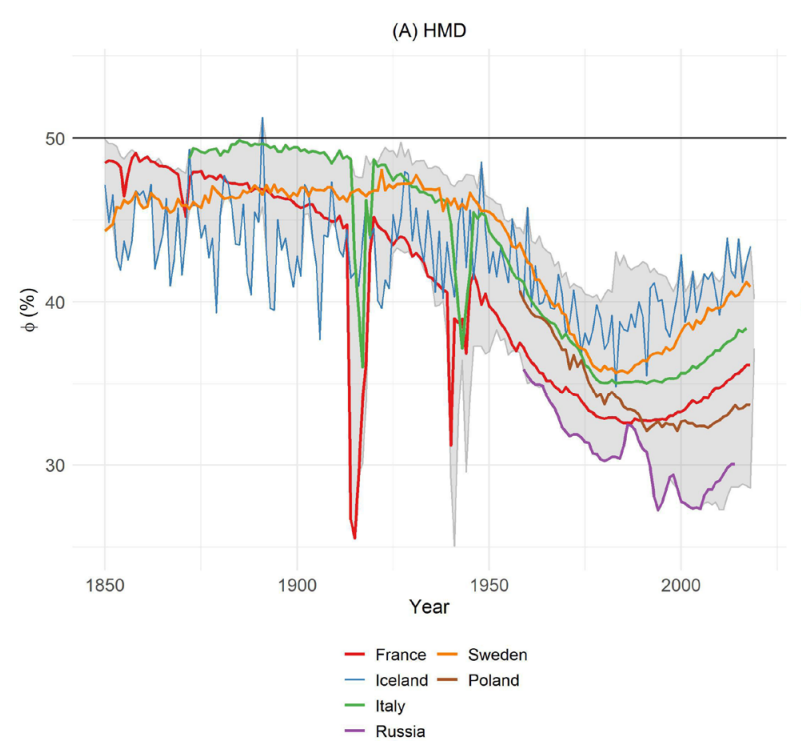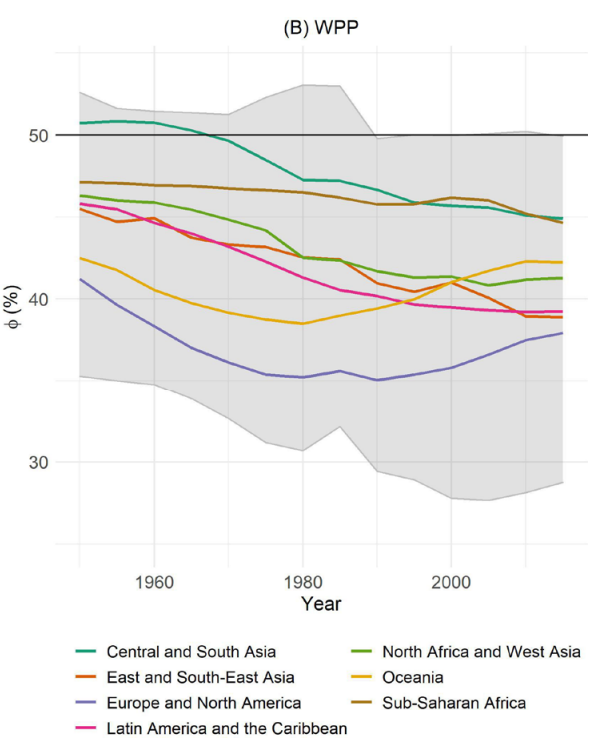Undverted cognition: men's longevity than women's longevity
Author:Scientific network Time:2022.08.09
Wen 丨 Jia Yuegeng
Source | Biological World
Over the world, women's life span is more common than men. According to the World Health Organization (WHO) data, in 2019, the average gender difference in global life expectancy is 4.4 years. The content of my country's latest "Outline of Chinese Women's Development (2011-2020)" shows that the average life expectancy of women has exceeded 80 years; and men's expectations are 73.64 years.
Scientists believe that the root cause of this phenomenon is a complex combination of biology, environment and behavioral factors. For example, men are more likely to smoke, alcohol and overweight. In addition, the high level ofrogens levels are also related to adventure, thereby increasing mortality; estrogen plays a role in preventing some diseases.
Although the difference between the living rate of men and women is objective, researchers believe that this average life -based conclusion is obviously too general.
Recently, a statistical analysis that spans more than 200 years across the world has shown that men are more likely to live longer than women, especially those who have been married and have received higher education.
On August 2, 2022, Dr. Marie-Pier Borgeeron-Boucher, the University of South Danish Population Discipline Center, and others published on the British Medical Journal (BMJ) Journal BMJ Open, entitled Probability of Males to Outlive Females: An An Research papers of International Comparison from 1751 TO 2020.
The study shows that although men's expected life span is usually lower than women and the mortality rate is also high in all ages, men are still more likely to live longer than women. These discoveries challenged the traditional views and revealed the slightly inequality between women and men.

Among many different populations, human women or female animals show survival advantages. However, researchers said that the gender differences in survival are usually determined by comparison life span, but it summarizes the average life expectancy, not the individual life. "Lifespan variation", that is, the difference in life span in the population has received more and more attention. Various indicators show the heterogeneity of life length, exceeding the category of life expectancy.
In this new study, in order to quantify with time, in different groups, what is the probability of men's longevity than women and discuss life mutation. It is used to study the gender differences in the death population of 199 people around the world for more than 200 years.
This method is applied to the three population data sets, including the life table of all available countries (41) in all available countries (41) in human mortality database (HMD), as well as 4 parts of East Germany, West Germany, and the United Kingdom (England (England (England (England, England, England, England, and the United Kingdom , Scottish, Wales, Northern Ireland) separate analysis data. The earliest year of available data was 1751 (Sweden), and the latest year was 2020.
Researchers also use the streamlined life table in the "2019 World Population Outlook Edition" (WPP). The data provides a life table that is divided by gender by the age of 199 by the 5-year-old age group and the five years of 1950-1954 and 2015-2019.
In the end, they used the national death and population statistics in the United States in 2019, comparing the probability of men's longevity than women in different education levels and marriage status.
Data analysis shows that in the random match between a man and a woman at the age of 0, since 1850, almost all years and the life span of almost all population, the probability of men's life span exceeds 25%to 50%of women's life span between 25%and 50%. Variety. This value of only a few countries in different periods is higher than 50%.

5 countries in HMD have exceeded the probability of men's life span more than women since 1850
These countries are: Iceland in 1891; Jordan from 1950-1954; Iran in 1950-1964, Iraq from 1960-1969; Bangladesh, India and Maldives before 1985; and Bhutan from 1995-2010.

The survival rate of all WPP countries (gray) since 1950
Data show that in the past 200 years, 1-2 (25%-50%) of every 4 men is longer than women's life. This challenges the traditional concept of men's life than women.
However, in developed countries, the probability of men's longevity than women has been declining. It was not until the 1970s that all the population began to rise. The increase and decline of the expectations of men and women's expectations are mainly due to the differences between smoking and other behavior.
In low -income and middle -income countries, men are usually higher than women's life span, but this does not necessarily mean higher gender equality in survival.
The most prominent is South Asian countries. From the 1950s to the 1960s, men's survival rates in these countries were higher than 50%. In India, the mortality rate of girls under the age of 5 is higher than boys, and the mortality rate of girls in recent years is still higher. But since the 1980s, the mortality rate of women over 15 years old is lower than men. Researchers said that this may balance the unfavorable factors when you were young. In addition, some external factors seem to play a key role. For example, from 2015 to 2019, in the entire American population, men's longevity is 40%longer than women.
But this data is different due to different marriage status and education. Specifically, the probability of married men's longevity than women is 39%, while unmarried men's longevity than women's longevity is 37%; in terms of education, this number of men or above is 43%. Men with education level below high school It is 39%. Moreover, married men who have received higher education are more advantageous than unmarried women with high school education.
Researchers pointed out that the relationship between husband and wife will affect each other's health. This is especially true for men, and they can benefit more than women than women. Therefore, blind interpretation of the expected life span sometimes leads to distortion of actual life span.
The research communication author Bergeron-Boucher explained that the life of a few men is indeed short, which has caused this difference. But not all women live longer than men, and there are not a few women who do not live long. For example, the 10 -year difference between life expectancy at birth may be related to the probability of 40%of men's longevity than women, which indicates that 40%of men have a longer life than random pairing women. Therefore, not all men have 10 years of disadvantages, which is ignored by simply comparing the expected life expectancy.
Overall, the decline in women's mortality rates is faster than less than 50 years old, especially in the first half of the 20th century. This is mainly due to the improvement of infants and children's death.
In addition, men not only maintain the disadvantages of survival when they are young, but also the same when they are old. They are more likely to take risks or accidents when they are in their 20-30s, and they are more likely to smoke and alcohol, which leads to higher cancer incidence and mortality in their 60s.
In short, this study provides a more comprehensive understanding of the inequality of life. The research team summarizes that a more detailed method is needed to interpret the gender differences in survival.
Thesis link:
https://bmjopen.bmj.com/content/12/8/e059964
Capture | Guo Gang

Cooperation: [email protected]
Submission: [email protected]
Like this article? Praise + watch support!


- END -
"Ask the sky" experimental cabin successfully asked the sky, China Southern Airlines wisdom helps to "ask the sky" to follow the dream

Jiaojiao News According to the China Manned Aerospace Engineering Office, at 14:22...
The magnifying glass is on the carton and caused the fire. What is the principle of fire?

Science Fiction Network June 21 (Qin Yingying) Recently, a sudden fire suddenly ca...